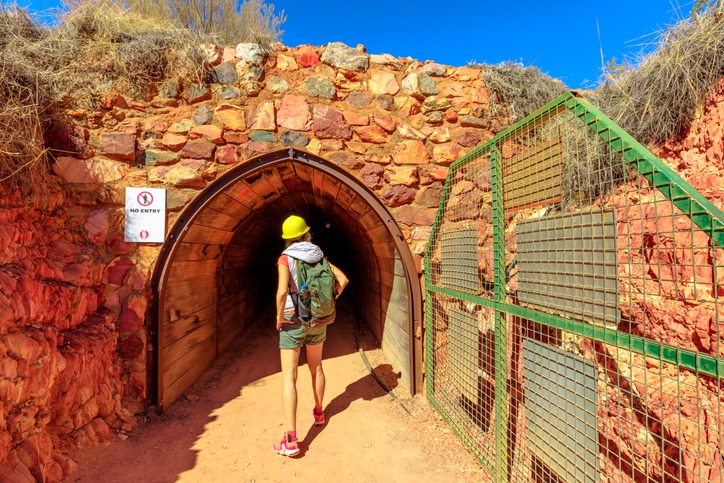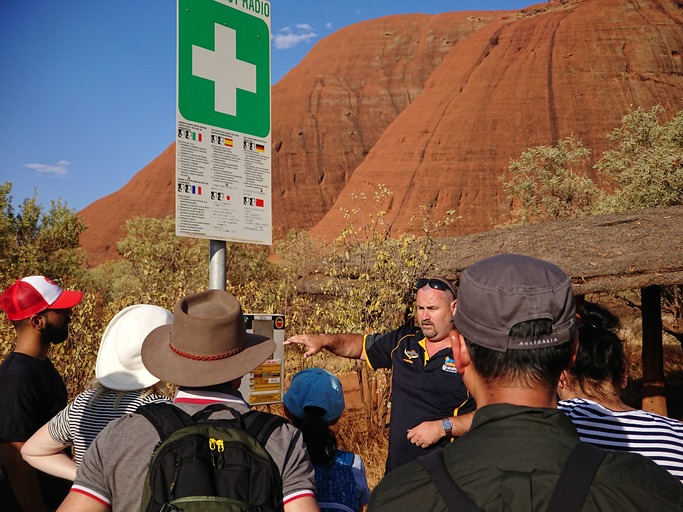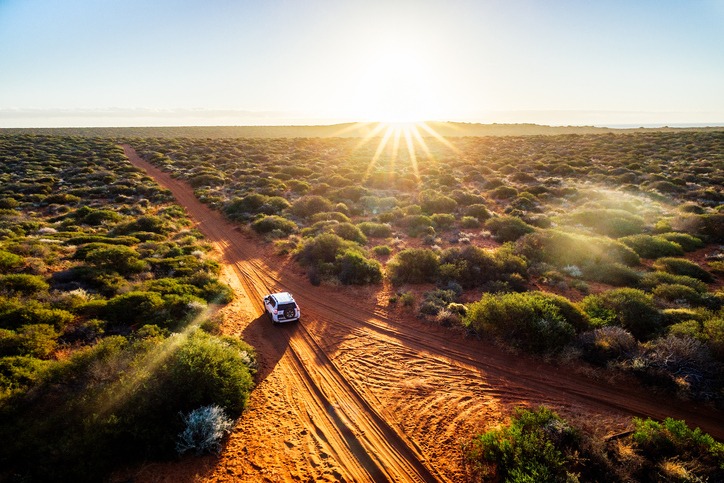The Outback is the vernacular moniker for Australia’s remote interior. The dry region that constitutes most of the land down under has a low population density but is rich in natural sights and experiences.
The Outback is home to Australia’s vast collection of species, including the thorny devil, dingo, and others. Because the Outback is so vast, it depends on which region you visit, but learning about Aboriginal culture and going on an indigenous-led expedition is one of the best experiences.
To appreciate Australia’s unique ecosystem and wonderful outdoors, you must be active and adapt rapidly to weather variations. And the weather in the nation can abruptly change, with significant temperature drops occurring overnight.
As a result, it’s a good idea to be equipped and ready. Here are some Australian outback outfits to bring, along with tips on wearing them.
The Fundamentals

This is our bare-bones packing list for the Australian Outback.
Yes, you can certainly grab more, but traveling light is preferable, and we encourage you to do so.
The Australian Outback Hat
The outback hat and the cowboy hat are practically identical. Still, the cowboy hat is a uniquely American accessory, whereas the outback hat is the polar opposite.
Australian outback hats are a terrific alternative if you despise the American cowboy hat yet still want to wear it. An outback hat’s brim is akin to a cowboy hat, with a small upward slope. On the other hand, the crown is quite different and is more like the crown of a safari hat.
For decades, the Outback hat has expanded to many places worldwide, becoming one of the most well-known headgears. And there are numerous sorts of outback hats on the market, each with its materials, brim shape, and colors.
Bottoms
The first item to take is a pair of jeans that may function as smart casual attire if you’re going out to dinner (yes, jeans are fully acceptable dinner wear in Australia’s Northern Territory).
Zip-off hiking pants: extremely easy to care for and can be used as shorts.
Tracksuit pants: these are best to keep you warm and toasty around the campfire, and bring pajamas for those chilly nights. DO NOT VISIT THE OUTBACK DURING THE WINTER SEASON WITHOUT THEM.
Shorts: Some people will feel warm enough to wear shorts during the day, so bring two pairs for them (one pair could be the zip-off hiking pants to save luggage space).
Tops

T-shirts: bring two or three for day travel, plus one long-sleeved t-shirt for winter evenings. T-shirts are ideal since they can be rolled up to conserve space when traveling and worn layered for extra warmth.
A fleece: In the Outback during the winter, you will require a fleece at night.
A long-sleeved thermal: if you spend a lot of time camping and become cold.
Intimates
Five pairs of underpants: hand wash them
Two bras for women: hand wash them every several days
Footwear
Socks: bring at least one pair of bed socks, one pair of thick hiking socks, and two to three pairs of running socks.
Walking boots or shoes: great for hikes and walks in undeveloped terrain.
Runners or cross-trainers: these are simple, comfortable, and functional footwear. You can also use trail runners as walking/hiking shoes if you get trail runners.
A pair of adventure sandals: while novice travelers may tell you that thongs (flip flops) are fine, BEWARE: there are tough burrs out the Outback called Cat’s Eyes/Three-Corner Jacks that will penetrate flip flops and go directly into your skin. Because the soles of adventure sandals are thicker, you can wear socks with them more readily.
Other Apparel
Pajamas: you can bring tracksuit pants and a thermal or a long-sleeved t-shirt in winter, and daggy shorts and a t-shirt in summer
A beanie: yes, bring a beanie. Even better, head to Alice Springs in late June and attend the world’s largest Beanie Festival.
Gloves: for chilly, early mornings
Swimsuits or board shorts: even in the winter if you’re visiting Dalhousie Springs or if you’re insane enough to swim in Ellery Creek Big Hole and eventually wind up with hypothermia!
A dark-colored sarong: this can be used as a sheet, a towel, a pillow, a headcover to block off a full moon or outrageously bright lights in campgrounds while camping, or a shawl.
A quick-dry backpacker’s towel: to dry yourself off
Flynet: in general, you will not need one of these in winter. You’ll need one if you’re traveling during the warmer months of October to April.
Hiking Outfit for the Outback

It can be challenging to assemble a cute hiking outfit, but here’s some advice on how to be practical, comfortable, and fashionable all at the same time.
A thin jacket (that you can take off if it gets too hot) is essential for the early mornings and nights when it can get rather chilly. Breathable hiking boots and leggings will sustain your active days out in the Outback. Finally, a cap will protect your face and eyes from the sun.
How to Pack for a Trip to Australia’s Outback
Even in peak summer, Australia’s weather conditions and climate zones can shift suddenly. Pack multifunctional clothing that can readily respond to temperature and weather fluctuations. Technical apparel can be worn everywhere and at any time.
Wear Travel Clothes That Are Versatile
You will feel more at ease in every scenario if you dress appropriately for travel. If you’re going camping in the sandy red Outback, you’ll need a versatile travel outfit that you can easily match with other items utilized in different scenarios. So choose travel clothes that you can wear in various situations and for a variety of purposes.
Favor Functional Clothing to Jeans
Because of its minimal weight, technical gear is a good choice for travel. It adjusts to your body temperature, keeps you dry, and keeps you warm, dry, and comfortable in all weather. Most fabrics are highly improved; they are breathable, waterproof, and moisture-wicking (that is, they allow moisture from the body to pass through).
Furthermore, functional clothing is long-lasting and easy to care for; you can wear technical clothing for numerous years. Use functional clothing when you’re on the road because it provides the most comfort.
After mastering how to pack your outfits down to a pat, your next quest should be packing the must-have items for traveling in the Australian Outback and remote traveling.

